Sterling Silver vs Stainless Steel Jewelry: Which One Should You Choose?

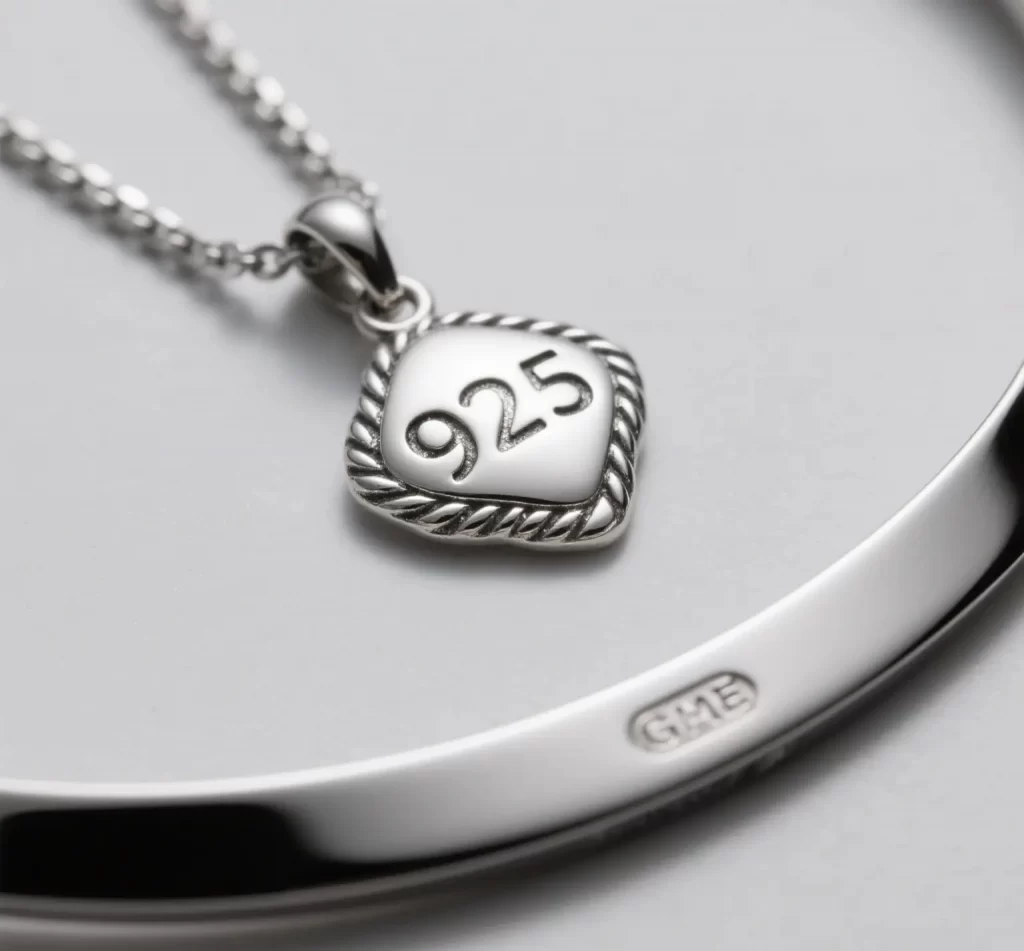
Sterling Silver vs Stainless Steel Jewelry: What’s the Difference?
Sterling silver vs stainless steel jewelry represents two popular choices in the jewelry market today. When considering what exactly is sterling silver compared to stainless steel jewelry, it’s important to understand their unique properties. Sterling silver is a precious metal alloy, similar to gold or platinum. When you add in its beauty and affordability, though, it becomes extraordinary. In jewelry, this beauty glows gently and provides a classic appearance.
What Exactly is Sterling Silver?
Sterling silver is a precious metal alloy, similar to gold or platinum. When you add in its beauty and affordability, though, it becomes extraordinary. In jewelry, this beauty glows gently and provides a classic appearance.
You’ll find it used predominantly in rings, necklaces, earrings, and bracelets. It is used in much more than jewelry—flatware and commemorative keepsakes are among its wider applications. Whether you’re purchasing jewelry or other decorative items, knowing what’s in sterling silver is important.
With this information, you can select pieces that will endure and appreciate in value.
The 92.5% Purity Standard
The hallmark of sterling silver is its 92.5% pure silver content. This 92.5% purity standard is important because pure silver, although gorgeous, is impractically soft for most applications.
The other 7.5% is typically made up of copper, which increases the metal’s strength and allows the jewelry to better maintain its shape over time. U.S. Law says that real sterling silver must be stamped with a “925” mark so buyers know it meets this standard.
If you spot “925” on a ring or pendant, you’re looking at an item with the right amount of silver for durability and long-term wear.
Why Not Pure Silver?
Pure silver may sound like the perfect solution, but it’s too soft and malleable, bending and scratching far too easily. By combining silver with copper, jewelers are able to create pieces that can withstand the rigors of everyday life.
This combination allows artists to make delicate chains, statement cuffs, and other forms that wouldn’t hold up in fine silver. This alloy process means that sterling silver can hold up to more intricate and delicate work.
This flexibility makes it perfect for everything from everyday to elegant designs!
Hallmarks of Authenticity
This means that authentic sterling silver jewelry will always have a hallmark, such as “925,” “sterling,” or “ster,” stamped on the piece. These hallmarks are used to help buyers identify authentic pieces and determine that they’re not counterfeit or fake items.
For anyone shopping—especially online or from overseas, like with HonHo Jewelry Manufacturer in China—looking for these marks is a simple way to feel confident in what you buy.
What About Stainless Steel Jewelry?

Stainless steel has recently gained popularity as a jewelry favorite, particularly in urban areas such as Los Angeles. Jewelry grade stainless steel is an alloy composed of iron, chromium, and nickel. The unique mix provides it with outstanding corrosion resistance, allowing it to withstand such rigors as wear and tear, sweat and even salt air.
All these qualities are the reason stainless steel is today one of the most popular metals in the jewelry industry. It’s inexpensive, durable, and works with an enormous variety of styles—from bold cocktail rings to delicate chain maille.
The Alloy Advantage Explained
The precise formula of metals included in stainless steel give it a strength that is far superior to the average. Chromium is the secret; it creates a protective patina that prevents oxidation and pitting. That’s why whether you wear it every day or not, jewelry still looks luminous.
Stainless steel is a better option in general for anyone with sensitive skin. The majority of them are nickel-free and hypoallergenic, reducing the likelihood of rashes or itchiness. There are more than 150 different varieties of stainless steel, allowing producers to choose alloys for specific requirements.
Take HonHo Jewelry Manufacturer in China as an example, they’re making high-quality, long-lasting, non-tarnish, custom jewelry with durable, waterproof alloys.
Common Steel Grades Used
Even jewelry makers tend to use such grades as 304 and 316L. Grade 304 is very strong and is resistant to most chemicals. Grade 316L contains a little more molybdenum, which increases resistance to corrosion even further.
For consumers, knowing the grade is key to ensuring your piece will stand the test of time, particularly if it’s something intended for everyday wear.
Why It’s So Tough
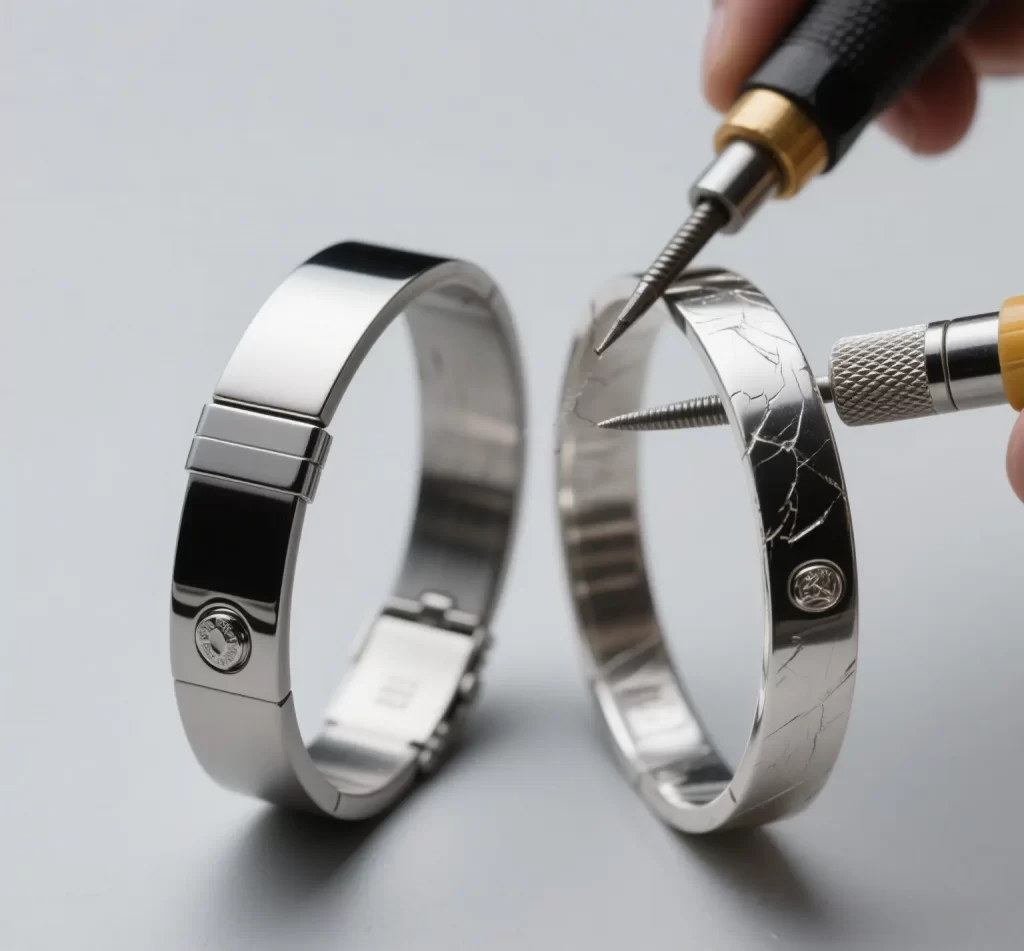
Stainless steel is very hard and dense, therefore it’s heavier than silver but incredibly hard to scratch or dent. That makes it ideal for rings, bracelets, or any other jewelry that gets a lot of wear and tear.
It requires minimal maintenance—just an occasional polishing with a soft cloth. Some varieties can even be magnetic. Additionally, a lot of the jewelry is made with recycled steel, making it an eco-friendly choice.
Sterling Silver vs. Stainless Steel: Core Differences
When comparing sterling silver vs stainless steel jewelry, it’s important to understand their fundamental attributes that distinguish them significantly for everyday wear, fashion, and care. Sterling silver vs stainless steel are two different metals that are both widely used in contemporary jewelry. Yet, their fundamental attributes distinguish them significantly for everyday wear, fashion, and care. Both metals have their advantages and disadvantages in different ways.
Take into account factors such as purity, look, maintenance over time, and cost when deciding on your purchase. The table below gives you a straightforward side-by-side comparison of their key characteristics. From there, we’ll go further into what makes each metal tick.
|
Characteristic |
Sterling Silver |
Stainless Steel |
|---|---|---|
|
Purity |
92.5% silver, 7.5% other metals |
Mix of iron, carbon, chromium, nickel, others |
|
Durability |
Prone to scratches, dents, and tarnish |
Highly resistant to scratches and dents |
|
Maintenance |
Needs regular cleaning and polishing |
Low-maintenance, easy to clean |
|
Appearance |
Bright, classic shine |
Sleek, modern finish |
|
Weight |
Usually lighter |
Heavier, more solid feel |
|
Skin Sensitivity |
Can cause allergies (copper/nickel) |
Mostly hypoallergenic |
|
Price |
Moderately priced to high |
More affordable |
|
Repairability |
Easy to resize and fix |
Harder to repair or resize |
|
Sustainability |
Mining impacts, some recycled |
Often includes recycled materials |
|
Markings |
.925, 925, Sterling, etc. |
Rarely marked for purity |
1. Material Makeup: Purity vs. Power
On the other hand, quality sterling silver is an alloy composed of 92.5% pure silver combined with 7.5% of other metals, most commonly copper. This unique metal composition provides sterling silver with the durability necessary for everyday use, as pure silver is too malleable for jewelry pieces. Most sterling silver jewelry pieces sold in the U.S. will have visible stamps such as “Sterling” or “.925” to indicate their composition, enhancing their value and iconic appearance.
Likewise, stainless steel is not reliant on precious metal content. It’s an alloy primarily made up of iron, carbon, chromium, and often nickel and other metals. The precise formula varies by type, but the intent is invariably to increase toughness and prevent corrosion, making it a popular choice for various jewelry designs.
Stainless steel was engineered for tough use, unlike its sterling silver jewelry counterpart. That’s why you’ll find it in watches, rings, and bracelets designed to withstand life’s challenges. The combination of metals in each influences their value and silver appearance.
This composition affects how they endure over time. Although quality sterling silver is more precious, it is softer and more susceptible to scratching or denting. In contrast, stainless steel is designed to withstand impacts and can regain its shape and polish with minimal effort, making it an effective jewelry option for daily wear.
For those considering buying jewelry, understanding the differences between the two can guide your choices. While sterling silver offers a luster silvery look, stainless steel provides enhanced durability, making both great metals for a diverse jewelry collection.
2. Durability Showdown: Which Lasts Longer?
In everyday use, sterling silver is particularly prone to wear. It scratches easily, can bend if it is too thin, and can get dinged if knocked. In time, it can become tarnished, but most people appreciate the rich patina that forms.
Adventurers Great and Small Jewelry lovers typically opt for sterling silver for cherished items that aren’t subject to heavy wear. When it comes to toughness, stainless steel wins hands down. It is highly scratch and dent resistant.
Jewelry that requires durability, such as certain men’s rings, thick bangles, and even chains, frequently utilize this metal. Its reputation for not warping or losing shape means that pieces stay looking new longer. Individuals pursuing active lifestyles or those who work with their hands frequently gravitate towards stainless steel for a variety of practical reasons.
If you’re looking for a beautiful piece you can easily polish and admire for years, sterling silver is ideal. Though stunning, sterling silver needs a little extra love to keep it tarnish-free.
3. Tarnish Trouble: The Real Shine Story
This is because the copper in the alloy reacts with air and moisture forming a patina and darkening the surface with time. This is accelerated by sweat, lotions, perfumes, and even the atmosphere itself in metropolitan environments such as Los Angeles.
Best practices to reduce tarnish should involve keeping silver in dry areas, buffing it after use, and employing anti-tarnish cloths. While a regular polish can restore its luster, it’s a constant task.
Stainless steel won’t tarnish. It’s chromium content creates a protective layer that prevents oxygen and moisture from altering the steel’s appearance. This turns into retaining its polished or non-polished look with very little maintenance—simply a buffing every so often will do.
4. Look and Feel: Aesthetic Appeal Compared

Sterling silver features a shiny, supple sheen that is timeless, yet slightly warmer in its feel. Its luster is favorite in high jewelry, family heirlooms, and items with intricate craftsmanship.
It works well with modern and classic styles alike, making it the perfect choice for anyone who appreciates a classic aesthetic. Stainless steel has a very modern, high-tech appearance. It works most harmoniously with contemporary, geometric forms and sharp lines.
Which is probably why many brands make stainless steel for pieces that need to look very sleek and modern. Both metals have beautiful options available in a variety of styles! Sterling silver tends to be the more classic choice, while stainless steel steals the show in modern streetwear and minimalist ensembles.
5. Weighty Matters: How They Actually Feel
Sterling silver is generally a bit lighter than stainless steel. For rings or earrings, this can translate to additional comfort, especially for all-day wear. Most importantly, stainless steel feels plenty substantial, heavier and more solid.
Everyone has their own preferences, some enjoying a more solid feel, others needing something a bit lighter to be comfortable. When choosing jewelry for everyday wear, weight is an important factor. A thick chain or ring can impede your movement and get annoying.
A lighter piece may be the perfect weight.
6. Skin Sensitivity: Key Allergy Concerns
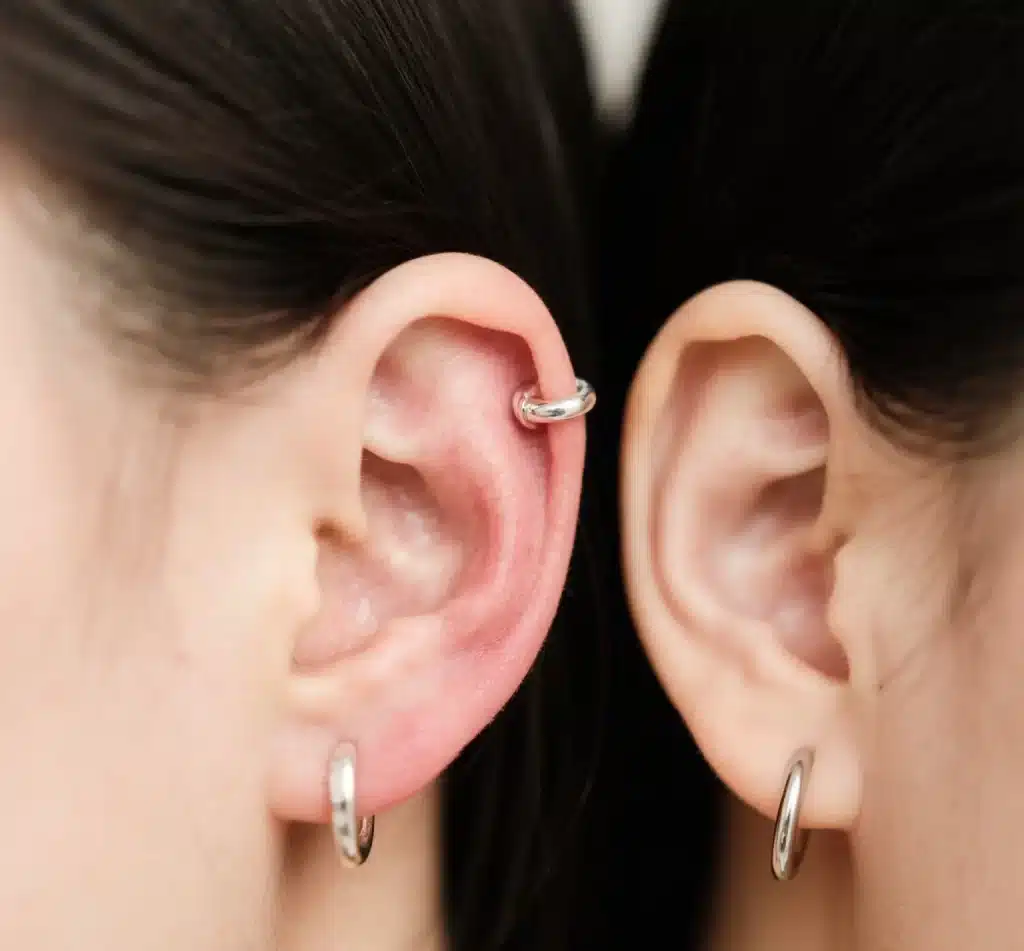
Because of its resistance to corrosion, stainless steel jewelry pieces are commonly considered hypoallergenic, making them an effective jewelry option for anyone with sensitive skin. Most stainless steel used for jewelry today does not contain nickel or other typical irritants, enhancing durability for daily wear. HonHo Jewelry Manufacturer in China is one of the manufacturers producing quality stainless steel options.
In contrast, sterling silver, which is generally safe for most, incorporates copper alloy and occasionally small amounts of nickel into its alloy. This can lead to complications for those with severe metal sensitivities. If you have sensitive skin, inspecting jewelry stamps and requesting quality sterling silver alternatives is advisable to avoid any adverse reactions.
For silver lovers, choosing the right jewelry piece is essential. Sterling silver jewelry pieces can often be a popular choice, but inspecting for nickel content is crucial. The best approach for those with sensitivities is to request nickel-free options and explore diverse jewelry collections that cater to your unique style.
7. Daily Care: Keeping Your Jewelry Gleaming
Sterling silver:
- Store in a cool, dry, soft pouch or anti-tarnish bag
- Wipe with a soft cloth after wearing
- Polish with special silver polish as needed
- Remove before swimming or using lotions
Stainless steel:
- Rinse with warm water and mild soap
- Dry with a soft cloth to stop water spots
- Store away from harsh chemicals
Both require regular cleaning to look their best, but the maintenance required is greater for sterling silver.
8. Price Point: Budget vs. Investment Piece
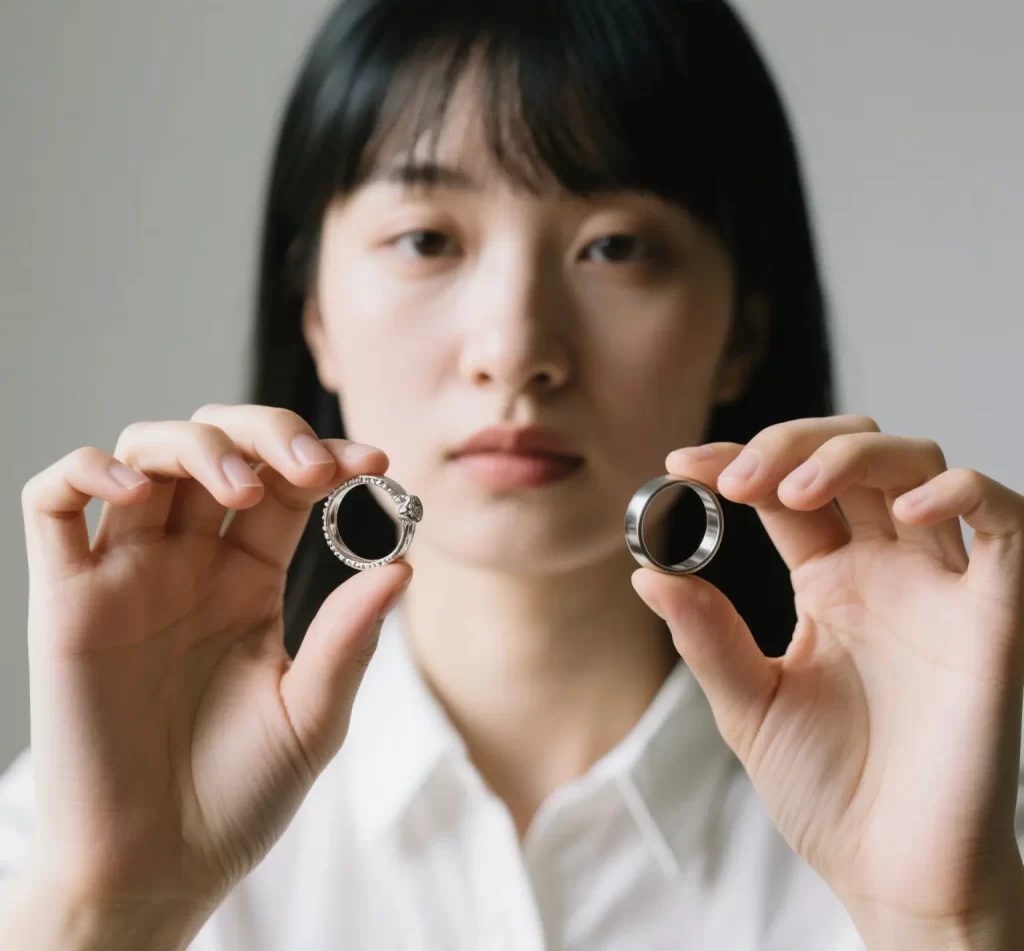
Stainless steel jewelry tends to be more affordable than sterling silver. This is because of the high cost of raw materials and how simple it is to create steel jewelry. With stainless steel you don’t have to sacrifice style for cost.
It’s equally great for jewelers who want to create strong pieces that can withstand heavy wear. While sterling is the more expensive option, the increased cost offers greater value when it comes to resale and an overall sense of opulence.
Whether you’re looking for gifts or pieces for special occasions, sterling silver is truly the more luxurious option. In contrast, stainless steel makes a wise choice for casual wear.
9. Fixing & Refinishing: Long-Term Love
Sterling silver is much easier to fix or resize. Professional jewelers can remove scratches, clean, polish, and even reshape rings if there are any signs of wear. That makes it a better long-term choice.
When it does tarnish or get some scratches, a quick trip to the jeweler restores the luster. Stainless steel is much more difficult to repair or resize. Its hardness and microstructure make repairs unlikely and if they are made, the cost is substantial.
Instead, the average user merely replaces parts as needed, though due to its exceptional durability, this rarely occurs.
10. Eco-Impact: Sourcing & Sustainability Facts

Mining sterling silver does damage to the earth, but many more companies these days are using recycled silver to reduce that effect. On the other hand, stainless steel is typically produced using recycled metals, and is 100% recyclable.
Local jewelry manufacturers—such as HonHo Jewelry Manufacturer in China—often focus on using recycled and responsibly-sourced metals. They produce waterproof and non-tarnish alternatives that last longer, contributing to reducing waste.
Sterling Silver vs Stainless Steel Jewelry: Core Differences
In the sterling silver vs stainless steel jewelry debate, cost is an important factor to consider. Sterling silver and stainless steel present varying price ranges, influenced by material and production. Buying in the U.S., sterling silver rings, chains, or earrings are likely to be pricier than their stainless steel counterparts.
Silver prices fluctuate with the market, and all sterling silver jewelry is usually stamped ‘925’ to indicate that it is genuine. This only continues to inflate the starting cost. Stainless steel, which is used in a lot of low-cost brands, remains constant in price because it is produced from lower cost metals.
A simple stainless steel bracelet retails for $15-$30. Conversely, a comparable sterling silver bracelet will cost you anywhere from $40-$100+ at least. Repairs and maintenance can drive up costs for silver, while steel remains inexpensive with minimal maintenance. Each works for different budgets and aesthetic preferences.
Maintenance Tips for Both Materials
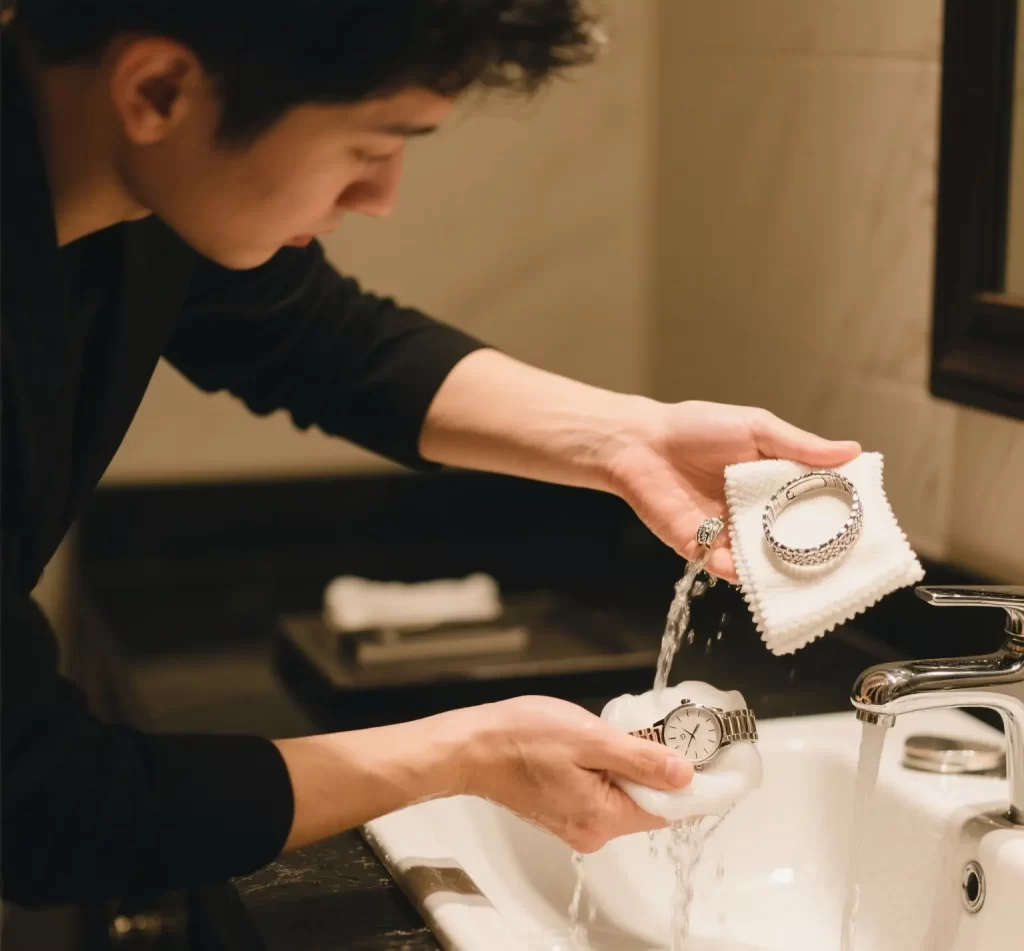
Sterling silver and stainless steel both require maintenance, but the process is different. Sterling silver is a precious metal and will oxidize, even in dry areas such as Los Angeles. Clean it using a soft cloth and some warm water with a few drops of mild soap.
To prevent tarnishing, store silver in a dry jewelry box or pouch. Because stainless steel is a bit tougher and doesn’t oxidize, it’s great for everyday wear or in saltwater cities. Wash it under running water with mild soap and dry it with a soft towel.
Avoid bleach and harsh chemicals for either. With silver, keep it simple by polishing occasionally with a silver cloth. Stainless steel will withstand a little more vigorous scrubbing if you notice accumulation. Both materials stay bright with minimal, routine maintenance.
Disadvantages of Stainless Steel Jewelry
PROS & CONS Stainless steel jewelry is great for its durability and easy care, but there are a few disadvantages. Cleaning, resizing, or repairing the metal can be difficult. When you don’t have a perfect custom-sized ring or need an emergency convenient repair you can run into some problems. Stainless steel may provoke skin reactions in people who are sensitive to nickel.
This can cause intense itching or skin rashes — more of an issue in warmer areas, such as the local hotbed of Los Angeles. Its shiny finish is easily scratched and it smudges over time. On the downside, stainless steel jewelry can appear duller than sterling silver, which can clash with certain formal wear. Few American jewelers work in stainless steel, making your options for unique designs or custom work limited.
Style Files: Fashion & Versatility
Sterling silver and stainless steel jewelry pieces continue to have strong footing with today’s jewelry buyer. They can all play a very versatile role, fitting everything from the most classic palette to the most avant-garde. Many people in cities like Los Angeles look for quality sterling silver pieces that work with busy days and nights out. Jewelry is about much more than aesthetics—it’s interlaced into our everyday lives. Selecting the appropriate finish not only displays your unique style but adds a level of functionality.
Sterling Silver’s Timeless Charm
Sterling silver’s timeless charm has definitely secured its position in classic and antique styles. Its subtle luster complements colored stones and allows artisans to best display meticulous craftsmanship. This malleable metal can sometimes be seen in detailed rings and heirloom pieces.
People are drawn to sterling for its timeless charm and its ability to accommodate a wide array of aesthetics. It’s a perennial favorite among those looking for something with that perfect combination of value and beauty. In reality, it is the most popular metal for engagement rings at 17% of purchases!
Stainless Steel’s Modern Edge
Stainless steel’s modern edge is extreme in modern jewelry. It can do both—perfect for clean, minimalist designs, but attention-grabbing, eye-catching showstoppers. This hardiness paired with its stylish appeal has rendered stainless steel as a top choice for everyday wear.
Additionally, stainless steel is hypoallergenic and doesn’t scratch or dent as easily as other metals. It’s no wonder that many young professionals and designers have started adopting it for its chic appearance and minimal maintenance. HonHo Jewelry Manufacturer, located in China, specializes in the custom fashion stainless steel and 925 silver jewelry. Their collection includes waterproof and non-tarnish options.
Current Trends: What’s Hot Now
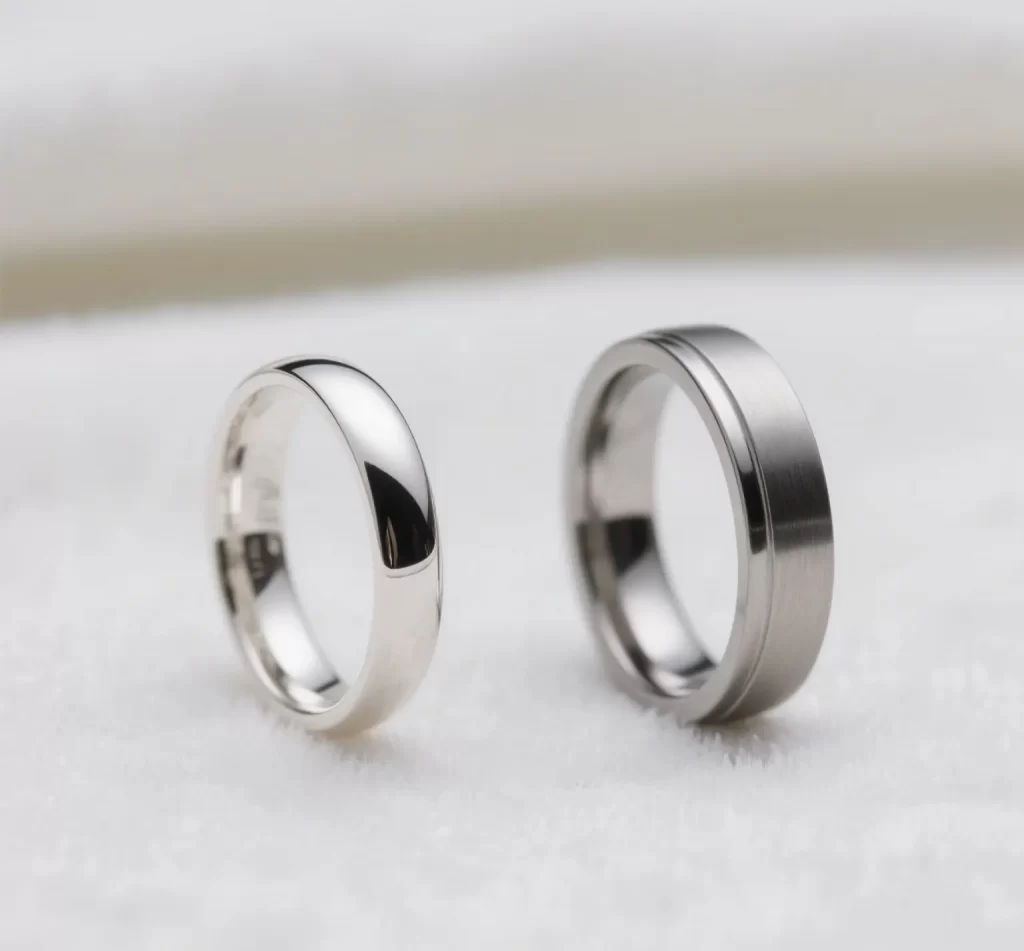
From the runway to street style, mixed-metal looks are hot right now. Almost majority (35%) of females today prefer jewelry that mixes gold, silver, and stainless steel. Simple statement chains and chunky rings continue to be popular.
Gemstones set in sterling silver and geometric shapes in steel are equally catching fire.
Pairing with Your Wardrobe
Sterling silver goes beautifully with pastels and business attire. Versatility is key as stainless steel pairs beautifully with both statement and minimalist ensembles. Just a few years ago, mixing metals was unheard of.
Layering each type in order makes a look that is balanced, yet dynamic, chic, but not stiff.
Our Hot Take: Picking Your Metal
Choosing the best metal for your jewelry pieces is all about what works best with your lifestyle, budget, and preferences. Consider quality sterling silver and stainless steel options before you pick.
- How often you plan to wear it
- Your spending plan
- What style you like
- If your skin reacts to metals
- The upkeep you want to do
- What the piece means to you
For Everyday Grit: Steel Wins
For Everyday Grit: Steel Wins. Stainless steel holds up under the wear and tear of everyday life. It’s super resistant to scratches and dents! This convenience is invaluable to those who make a living with their hands or simply wish to sidestep the trouble of dings and scratches.
While this is not an issue with softer metals, steel requires little maintenance to retain its shape or shine. You don’t require any complicated cleaning—simply rinse and dry. Whether gym-goers, nurses, or whoever is just constantly active, usually will choose steel bands, chains, or classic studs.
For Classic Elegance: Silver Shines
For classic elegance, silver shines. Sterling silver never becomes outdated. Well known as the default choice for white tie events. A silver necklace or pair of earrings punctuates the tailored look of business suits and formal evening gowns.
Finer work can be done by skilled makers in silver, lending each piece a measure of artistry. Of course, silver can be an investment as well, as the value of this metal will increase with time.
Budget-Friendly Bling: Steel’s Your Pal
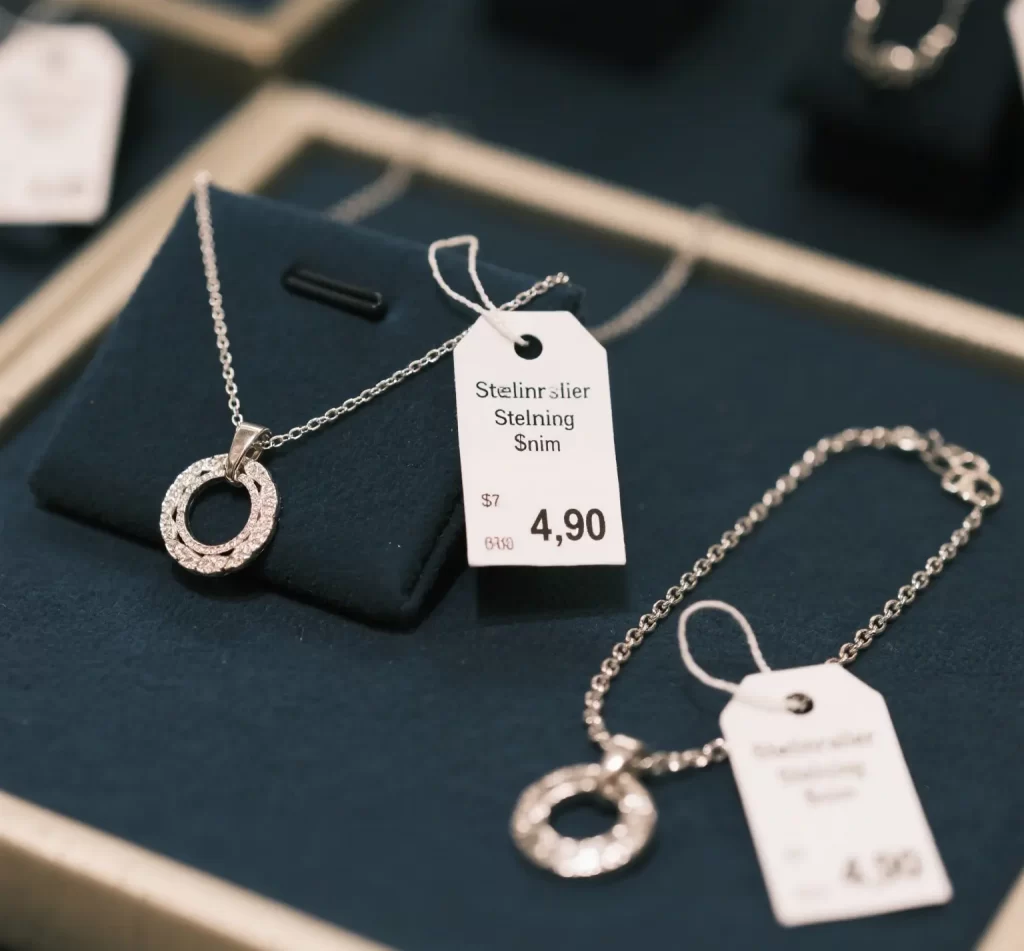
If budget is a big concern, stainless steel has plenty of hip styles to choose from without the premium cost. It’s not hard to find contemporary wedding bands, wrist bangles, or stacked necklaces that perform beautifully, wear like iron, and turn heads.
It’s a budget-friendly approach to experimenting with new styles or loading up on essentials.
Sensitive Skin? Our Honest Advice
When in doubt, stainless steel tends to be the best choice if your skin is sensitive. It’s typically hypoallergenic. That said, it’s always wise to patch test or try on before you buy, since everyone’s skin is unique.
Sterling silver is generally safe for most skin types, but doing a simple patch test will give you peace of mind.
Beyond the Surface: Deeper Insights
Sterling silver and stainless steel jewelry pieces each have their advantages, crafted by master artisans through unique processes. The differences in metal composition and craftsmanship result in diverse jewelry collections, making each jewelry piece a reflection of the artist’s unique style.
How They’re Made: Craftsmanship
Sterling silver jewelry is made from 92.5% pure silver, which is usually alloyed with a small amount of copper to increase durability. This is important because its softness allows makers to easily shape it into fine, detailed designs. Typical techniques include casting, hand-soldering, and engraving.
Stainless steel, by comparison, is harder. It requires high-pressure machines and heavy duty tools to cut and shape. Techniques that craftspeople have honed over centuries, such as stamping and laser cutting, allow for clean, crisp, contemporary lines. Both require an extraordinary sharp eye for detail.
Where silver or softer metals permit delicate textures, with steel one must exert more power and control. Well-crafted, high-quality jewelry from both materials should be free of rough edges and have a substantial feel in your hand, the mark of fine craftsmanship.
Finishing Touches: Polish & Texture
The winning look is all in the finish. Silver can be polished to a bright, mirror-like finish; it can be brushed or hammered for greater depth. Stainless steel provides a sleek, contemporary shimmer, available in both satin and mirror finishes.
Choosing the correct finish will enhance the overall design, conceal minor imperfections, and impart a feeling to the work.
Real Wear: Long-Term Appearance
As a steel product, stainless steel holds up aesthetically with minimal maintenance. It stands up to scratches, tarnish, and water. Sterling silver requires a bit more care—frequent polishing will ensure a bright surface, but it will wear down quicker.
Long term, both can hold up, but steel is the superior choice for people who are tough on their bling.
The Patina Question: Aging Gracefully?
Sterling silver patinas naturally with age, forming a soft gray surface layer over time. Many are enamored with this weathered, vintage aesthetic. Stainless steel doesn’t develop patina, remaining as shiny as the day they first appeared.
Whether you prefer jewelry that evolves and adapts with time and wear, or one that resists the passage of time, is up to you.
HonHo Jewelry Manufacturer China with 15 years experience specialized in making stainless steel jewelry, brass jewelry, and 925 silver jewelry. They provide thousands of custom, waterproof, and non-tarnish solutions to their clients.
Making Your Choice: Smart Shopping
Smart shopping for jewelry involves making informed decisions. Understanding the differences between quality sterling silver and stainless steel jewelry pieces is crucial, as each provides unique advantages. Choosing the right jewelry option begins with knowing your priorities.
- Consider your lifestyle, daily activities, and how frequently you wear jewelry.
- Set a budget and stick to it.
- Research brands and check reviews for quality.
- Look for quality marks or stamps on each piece.
- Match your pick with your style and skin sensitivity.
- Shop from sellers you trust.
Identify Your Lifestyle Needs
Lifestyle is key when it comes to selecting jewelry. If you’re a manual laborer or live an active lifestyle, stainless steel is a smart choice. Best of all, it’s resistant to scratches and everyday wear and tear.
This durability makes it perfect for people on-the-go or millennial-first-time home buyers in search of low-maintenance products!
On the other hand, sterling silver is especially popular with shoppers who love romantic, vintage looks. Nor do they flinch at a spot of maintenance to ensure their bling stays fresh.
Check for Quality Marks
Look for quality marks to ensure you’re getting the best of the best. Sterling silver jewelry will be stamped with “925,” “S925” or “.925”—this indicates it is 92.5% pure silver.
Stainless steel won’t always have marks, but quality stainless usually has a grade or brand visible. These marks are your eyes to quality and true craftsmanship.
Trust Your Personal Style
Jewelry is an intensely personal category. Stainless steel tends toward the contemporary and is good for clean, graphic styles.
Sterling silver provides a polished, elegant look and is ideal for the wearer who appreciates romantic, classic beauty.
Choose what speaks to you, whether that’s a bold statement piece or a more subtle accessory like a tiny stackable ring.
Where to Buy Quality Pieces
Shop with known brands. HonHo Jewelry Manufacturer, located in Yiwu, China, has been producing exquisite jewelry for more than 15 years.
They focus on waterproof, non-tarnish, gold-filled pieces in stainless steel, brass, and 925 silver.
Stores with good local reputations and well-reviewed online retailers offer you reassurance and more selection.
Conclusion: Sterling Silver vs Stainless Steel Jewelry
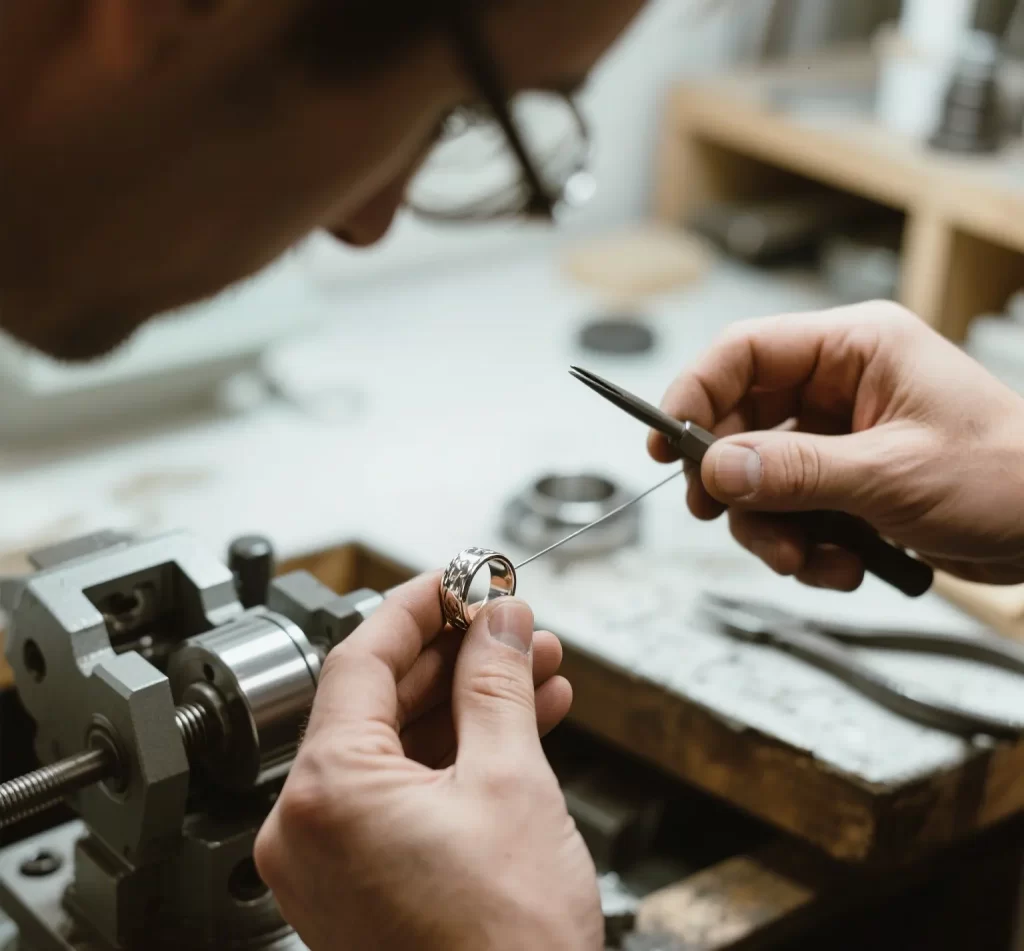
Sterling silver and stainless steel are both exciting, tangible boons to people here in the States as well. Sterling silver offers a more traditional aesthetic and is ideal for more delicate, intricate designs. Stainless steel really shines with its durable construction and easy maintenance. Let’s say you need some pieces for a fancy night out—this is where sterling silver comes in.
Looking for something that can really take a beating? Stainless steel to the rescue! No one metal is ideal for every individual, every single day. Consider your personal aesthetic, budget, and how much you’re willing to deal with maintenance. Have comments or requests to see more in-life selections? Call ahead or visit your neighborhood jeweler. Look for something that works with your lifestyle, not just your aesthetics.
Frequently Asked Questions
Is sterling silver better than stainless steel for sensitive skin?
Sterling silver jewelry pieces are often considered hypoallergenic, but some people may react due to the copper alloy present. In contrast, stainless steel options are generally more skin-friendly, making them an effective jewelry option, especially for those with nickel allergies.
Which metal is more durable for everyday jewelry?
Stainless steel, however, is much more durable and scratch-resistant, making it an effective jewelry option for rings, bracelets, and other sterling silver jewelry pieces you intend to wear every day. While quality sterling silver offers a beautiful luster, it is pretty soft and you can expect some tarnishing or bending over time with heavy use.
Does sterling silver tarnish easily?
To maintain the luster of quality sterling silver and prevent tarnish, store your jewelry pieces in a dry, airtight container and clean them regularly.
Can you shower with stainless steel jewelry?
Can you shower with stainless steel jewelry? While stainless steel jewelry pieces are safe to wear in the shower, we recommend avoiding aggressive soaps and chemicals to maintain their shiny silver appearance.
Which metal is easier to repair or resize?
Sterling silver, known for its quality sterling silver properties, is much easier to resize and repair due to its softer, more malleable metal composition, unlike stainless steel, which is strong but requires special tools for repairs.
Is sterling silver or stainless steel more valuable?
Value sterling silver jewelry pieces hold greater worth than stainless steel options, as the intrinsic value of quality sterling silver surpasses the affordable luxury of stainless steel.
What’s the best way to clean each metal?
To maintain the luster of your quality sterling silver jewelry, use a special polish or a soft polishing cloth for cleaning. For stainless steel pieces, wash with mild soap and water, then dry immediately with a soft cloth to ensure durability.
Related Posts

Understanding Wholesale Jewelry Pricing and How It Works
Understanding Wholesale Jewelry Pricing and How It Works When people see a ring that costs $6 wholesale and retails for $59, they often

The Art of Shine in Jewelry Polishing and Plating Techniques
Discover how polishing and plating transform modern jewelry with expert techniques for lasting shine and elegant finishes.
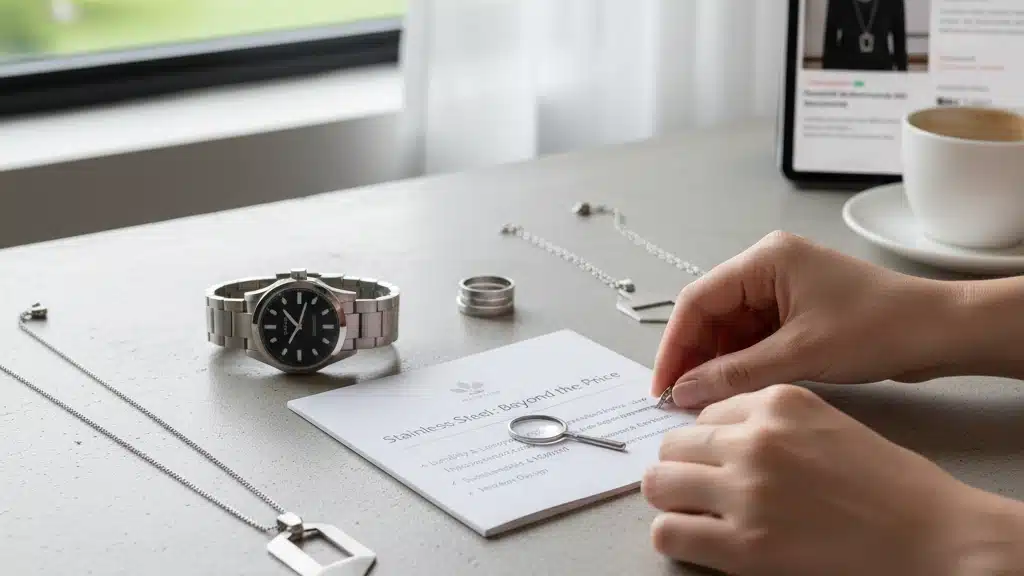
Τι Νοιάζει Πραγματικά τους Αγοραστές Ανοξείδωτου Κοσμήματος Εκτός από την Τιμή
Τι πραγματικά νοιάζει τους αγοραστές ατσάλινων κοσμημάτων πέρα από την τιμή ανθεκτικότητα υποαλλεργικά υλικά και μοντέρνο στυλ.
